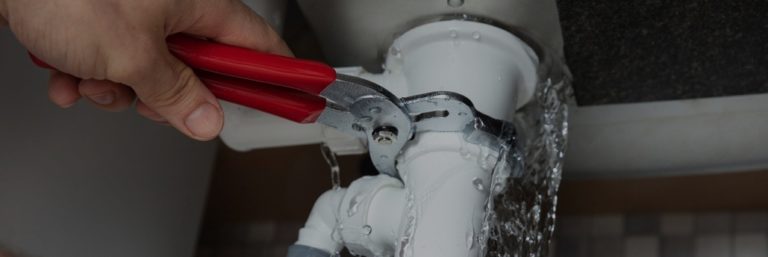The author is making several good observations related to Detecting hidden plumbing leaks in general in this post further down.

Early discovery of dripping water lines can alleviate a potential disaster. Some small water leaks might not be visible.
1. Analyze the Water Meter
Every home has a water meter. Checking it is a surefire manner in which helps you find leaks. For starters, turn off all the water resources. Make sure no one will flush, utilize the faucet, shower, run the washing equipment or dish washer. From there, most likely to the meter and watch if it will certainly transform. Since nobody is utilizing it, there need to be no movements. If it relocates, that suggests a fast-moving leak. Furthermore, if you detect no changes, wait a hr or more and inspect back once again. This indicates you may have a slow leakage that can even be below ground.
2. Inspect Water Intake
If you detect unexpected modifications, despite your intake being the same, it indicates that you have leakages in your plumbing system. An abrupt spike in your bill suggests a fast-moving leakage.
Meanwhile, a constant increase each month, even with the very same practices, reveals you have a slow-moving leakage that's likewise slowly rising. Call a plumber to extensively inspect your property, specifically if you really feel a warm area on your flooring with piping underneath.
3. Do a Food Coloring Examination
When it comes to water usage, 30% comes from bathrooms. If the color somehow infiltrates your dish during that time without flushing, there's a leak in between the container and bowl.
4. Asses Outside Lines
Do not fail to remember to inspect your outside water lines too. Examination spigots by affixing a yard hose pipe. Ought to water leak out of the link, you have a loose rubber gasket. Replace this as well as make certain all links are limited. It will help get it properly took a look at and kept yearly if you have actually obtained a lawn sprinkler system. One little leakage can throw away lots of water and spike your water bill.
5. Assess the scenario as well as inspect
Homeowners ought to make it a practice to inspect under the sink counters as well as also inside cabinets for any bad odor or mold growth. These 2 red flags indicate a leakage so timely interest is called for. Doing regular evaluations, also bi-annually, can conserve you from a major problem.
If you understand your home is already old, maintain a watchful eye on your heaters, hoses, pipelines etc. Check for stainings and also compromising as many pipes and appliances have a life span. They will certainly also naturally weaken as a result of damage. If you believe dripping water lines in your plumbing system, don't wait for it to rise. Call an expert plumber immediately so you don't wind up with a horrible mess in your house.
Early discovery of dripping water lines can mitigate a potential disaster. Some little water leakages might not be noticeable. Inspecting it is a surefire method that helps you discover leakages. One small leakage can waste lots of water as well as increase your water bill.
If you think dripping water lines in your plumbing system, do not wait for it to rise.
WARNING SIGNS OF WATER LEAKAGE BEHIND THE WALL
PERSISTENT MUSTY ODORS
As water slowly drips from a leaky pipe inside the wall, flooring and sheetrock stay damp and develop an odor similar to wet cardboard. It generates a musty smell that can help you find hidden leaks.
MOLD IN UNUSUAL AREAS
Mold usually grows in wet areas like kitchens, baths and laundry rooms. If you spot the stuff on walls or baseboards in other rooms of the house, it’s a good indicator of undetected water leaks.
STAINS THAT GROW
When mold thrives around a leaky pipe, it sometimes takes hold on the inside surface of the affected wall. A growing stain on otherwise clean sheetrock is often your sign of a hidden plumbing problem.
PEELING OR BUBBLING WALLPAPER / PAINT
This clue is easy to miss in rooms that don’t get much use. When you see wallpaper separating along seams or paint bubbling or flaking off the wall, blame sheetrock that stays wet because of an undetected leak.
BUCKLED CEILINGS AND STAINED FLOORS
If ceilings or floors in bathrooms, kitchens or laundry areas develop structural problems, don’t rule out constant damp inside the walls. Wet sheetrock can affect adjacent framing, flooring and ceilings.
https://www.servicemasterbyzaba.com/blog/how-to-detect-water-leakage-in-walls/

Do you appreciate reading about Detecting hidden plumbing leaks? Place a remark down below. We would be glad to hear your opinion about this write up. Hoping that you come back again before long. If you appreciated our article please do not forget to pass it around. Many thanks for taking the time to read it.
Overflow resolution available.